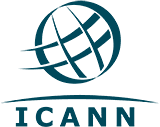Success stories of Latin entrepreneurs in digital businesses
In the digital age, having a website is not just an option, but a necessity for any entrepreneur who wants to take their business to the next level. At CyberGlobalNet, we have had the privilege of working with numerous Latino entrepreneurs who have seen significant growth thanks to their well-designed websites. Below, we share some testimonials from satisfied customers and how a website transformed their businesses. Testimonials from Satisfied Customers Capitol Marking Products CyberGlobal helped our company get their website back up and running after some issues with our previous hosting service. Oscar was fantastic to work with and helped us through every step of the process. We are so glad we found them and look forward to future projects. How a Well-Designed Website Transformed Their Business A well-designed website can be the key to opening new doors and opportunities. The stories of Juan, Maria, and Carlos are just a few examples of how good design and an appropriate web strategy can: Increase visibility: An SEO-optimized website allows your business to be found more easily in search engines. Improve credibility: A professional website conveys trust and seriousness, which is crucial to attracting and retaining customers. Facilitate communication: Having contact forms and business emails allows for more fluid communication with customers. Expand the market: With a website, there are no geographical limits. You can reach potential customers anywhere in the world. Do you want to be our next success story? If you are a Latin entrepreneur and want to experience the growth that a well-designed website can offer you, do not hesitate to contact us! At CyberGlobalNet, we are ready to help you take the next step. Write to us and become our next success story. Remember that in the digital world, your online presence is your cover letter. Don't underestimate the impact a website can have on your business!
Read More






